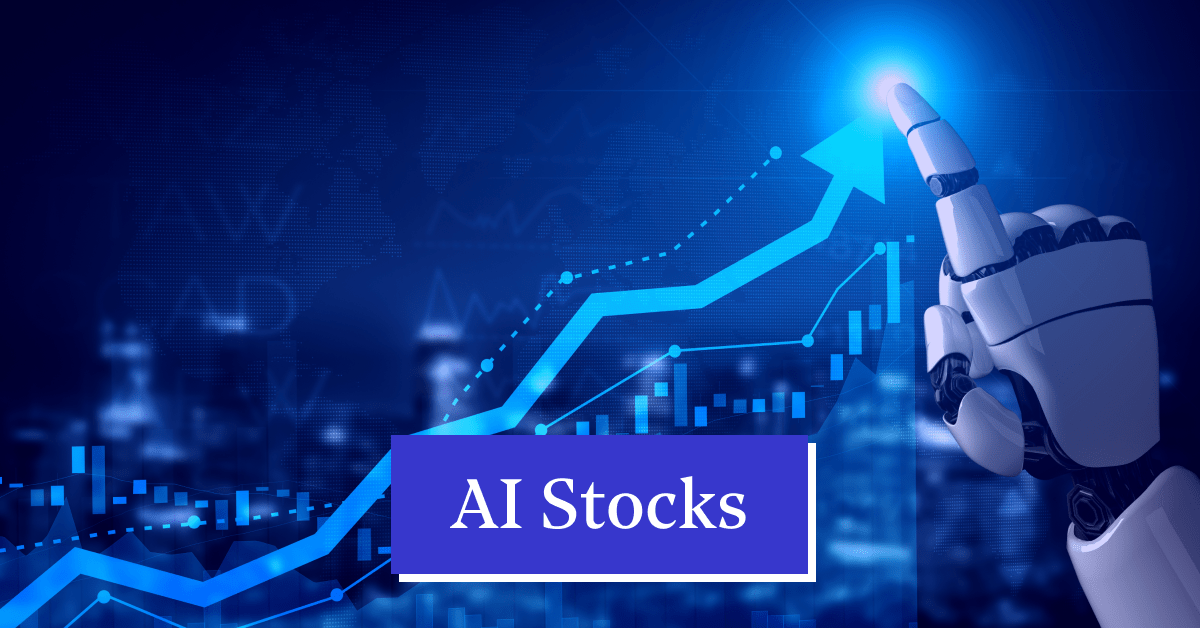Top 10 Suggestions For Diversifying Sources Of Data When Trading Ai Stocks, Ranging From Penny Stocks To copyright
Diversifying data is crucial to creating AI stock trading strategies which can be applied to the copyright market, penny stocks and other financial instruments. Here are 10 suggestions to aid you in integrating and diversifying sources of data for AI trading.
1. Use multiple financial market feeds
Tips: Collect data from multiple sources including stock exchanges. copyright exchanges. and OTC platforms.
Penny stocks: Nasdaq Markets (OTC), Pink Sheets, OTC Markets.
copyright: copyright, copyright, copyright, etc.
What’s the problem? Relying only on feeds can lead to untrue or inaccurate.
2. Social Media Sentiment Data
TIP: Examine the sentiment of platforms like Twitter, Reddit, and StockTwits.
To discover penny stocks, keep an eye on specific forums such as StockTwits or the r/pennystocks channel.
For copyright To be successful in copyright: focus on Twitter hashtags group on Telegram, copyright-specific sentiment tools like LunarCrush.
What’s the reason? Social media can create fear or create hype, especially with speculative stocks.
3. Leverage Economic and Macroeconomic Data
Include information such as GDP growth, unemployment reports, inflation metrics, and interest rates.
Why? The context of the price movements is provided by broader economic developments.
4. Utilize blockchain information to track copyright currencies
Tip: Collect blockchain data, such as:
Wallet Activity
Transaction volumes.
Exchange inflows, and exchange outflows.
Why: On-chain metrics give a unique perspective on market activity and investor behaviour in copyright.
5. Include alternative data sources
Tip: Integrate non-traditional types of data, for example:
Weather patterns (for industries like agriculture).
Satellite imagery (for logistics and energy purposes, or for other reasons).
Analysis of Web traffic (for consumer sentiment)
Why alternative data can be utilized to provide non-traditional insights in the alpha generation.
6. Monitor News Feeds & Event Data
Tip: Use natural language processing (NLP) tools to scan:
News headlines
Press Releases
Announcements from the regulatory authorities.
News is critical for penny stocks since it can trigger short-term volatility.
7. Track technical indicators across markets
Tips: Include multiple indicators into your technical data inputs.
Moving Averages
RSI (Relative Strength Index)
MACD (Moving Average Convergence Divergence).
Why: A mix of indicators enhances predictive accuracy and prevents over-reliance on one signal.
8. Incorporate both real-time and historical Data
Tip: Blend old data from backtesting with live data for live trading.
What is the reason? Historical data confirms strategies, and the real-time data on market prices adapts them to the conditions that are in place.
9. Monitor Regulatory Data
Tips: Keep up-to-date on new laws, tax regulations, and policy changes.
To track penny stocks, keep up to date with SEC filings.
Conform to the rules of the government for use of copyright, or bans.
The reason: Changes to regulations can be immediate and have a significant influence on market dynamic.
10. AI Cleans and Normalizes Data
AI tools can assist you to prepare raw data for processing.
Remove duplicates.
Fill in gaps where data isn’t available
Standardize formats in multiple sources.
The reason: Clean, normalized data will guarantee that your AI model functions optimally, without distortions.
Make use of cloud-based data Integration Tool
Tip: Organize data quickly by using cloud-based platforms like AWS Data Exchange Snowflake Google BigQuery.
Why is that cloud solutions allow for the integration of large datasets from a variety of sources.
By diversifying your data sources increases the durability and adaptability of your AI trading strategies for penny copyright, stocks, and beyond. Have a look at the best free ai tool for stock market india blog for more recommendations including investment ai, ai penny stocks to buy, ai stock analysis, ai day trading, incite, ai predictor, trading ai, ai stock analysis, ai trading app, investment ai and more.

Top 10 Ways To Mix Ai As Well As Fundamental Analysis With Stock Selection, Investing, And Forecasts
Combining AI with Fundamental Analysis can enhance the accuracy and efficiency of stock pickers. It also provides more complete approach to investment decisions. Here are 10 best strategies to incorporate AI and fundamental analysis to provide better investment predictions and stock prices:
1. AI to process data and collection
TIP: Use AI to automate the collection clean-up, analysis, and report on the most fundamental information such as earnings reports, financial statements, performance, and economic indicators.
The reason: AI can quickly sift large amounts of data in order to find trends or other key metrics. It reduces time and ensures that important information gets overlooked.
2. Incorporate Key Financial Ratios into AI Models
Tip Recommendation: Feed AI with the most fundamental metrics, such as P/E ratios (Pearl-to-Equity) P/B ratios (Pearl-to-Balance-Ratio), ROE (Return on Equity) and free-cash flow.
The reason: These ratios are used to determine the financial health and value of a company. AI is able to process these indicators more efficiently and recognize patterns that might not be obvious to human analysts.
3. AI Predictive Power and Fundamental Insights: Combining the two
Tips Use AI to boost predictions with traditional fundamental analytics, like the ability to forecast stock movements based on historical performance and forward looking fundamental metrics.
What is the reason? AI is able to incorporate more variables and patterns than traditional models. They improve predictions using analysis.
4. Automatic Earnings Calculations as well as Models for Valuation
TIP: Incorporating historic and current data into AI can help refine and make it easier to automate your earnings estimations as well as valuation models like Discounted-Cash Flow models.
Why: AI can quickly adapt models as new information emerges. This allows for more accurate estimates of stock prices and forecasts.
5. Integrate Macroeconomics Factors into the Company’s Fundamentals
Use AI to blend macroeconomic indicators (interest rate, inflation and GDP) along with micro-level data (company earnings and management quality, for example). ).
Why? AI analyses the impact of economic trends and external elements on the performance of a business. It assists in predicting stock performance with greater accuracy through understanding the influence of external factors.
6. Natural Language Processing can be employed to increase earnings and news calls
Tip: Implement NLP to process non-structured data for example, news articles transcripts of earnings calls or social media, and combine it with your company’s core data.
What’s the reason? NLP enables AI by extracting insights and sentiments from qualitative data. This context is then added to the basic metrics.
7. AI Real-time Processing and Long-Term Analyses
Tips – Make use of AI to track real-time markets data and make use of fundamental analysis to help guide investment decisions in the long run.
Why: AI is able to provide rapid responses to market changes, while fundamental analyses offer an outlook over the long term, resulting in a balance investment strategy.
8. AI-Enhanced fundamental screening can uncover the opportunities that may be missed
Tips: Create AI models that will automatically screen for stocks that are overvalued or undervalued based on a combination of fundamental indicators and market behaviour.
The reason: AI can uncover hidden investment opportunities by discovering patterns in the market that might not be apparent using conventional methods of fundamental analysis on their own.
9. AI Insights for Risk Management: Fine-tune Risk Management
Tips. Use AI to enhance risk management by evaluating the financial stability of a company and predicting possible risks including liquidity problems, or changes in the regulatory requirements, based on its foundational.
Why: AI can help you protect your portfolio against downside risks and take advantage of fundamental value opportunities.
10. Regularly Reassess Models with New Data
Tips: Feed your AI system with updated information on earnings, financial reports and macroeconomic indicators to refine the predictions. Change stock picks as required.
The reason: Market and financial data change over time, therefore, constantly updating your models with fresh information will ensure that your stock selections remain current and accurate.
Bonus: Use AI to Automate Portfolio Rebalancing
Tip : Leverage AI in order to keep track of your investment portfolio and make adjustments based on the foundational data, such as when the health of an organization’s finances declines.
What is the reason? AI can automate the rebalancing of portfolios based upon basic triggers. It helps maintain an optimal distribution of assets without constant human intervention.
Through combining AI and fundamentals analysis, you will be able to build a more robust approach to stock selection that is based on data and investment. AI enhances your ability to analyze large data sets, recognize patterns and adapt to changes in information rapidly, while fundamental analyses provide a solid basis for making long-term investment decisions. This approach is a hybrid one that allows you to make informed, timely, and efficient investment decision. Check out the best ai stocks to invest in url for more recommendations including ai penny stocks, artificial intelligence stocks, ai trading app, ai stock analysis, trade ai, ai trader, ai financial advisor, copyright ai bot, penny ai stocks, best copyright prediction site and more.

Leave a Reply